Italian table setting can vary from rustic/informal to more traditional arrangements for conventional dinner parties. Whatever the occasion, there are dining etiquette and rules Italians always follow and some are different from the Anglo Saxon ones.
Jump to:
- History of table setting
- Rustic vs traditional Italian table setting
- The basic
- Proper manners in Italy
- Why you should not say "Buon appetito" in Italy
- How to set a table
- How to set the glasses
- During the meal: host etiquettes
- During the meal: guest etiquettes
- Moving to the living room
- Exception to the rules
- Fun fact
History of table setting
During the Roman Empire, table etiquettes were very different from the current time.
At Roman formal banquets, diners were laying on dining couches called a triclinium.
They didn't have forks and ate with their hands, but they did have knives and spoons.
The fork was invented in Venice during the 14th century and introduced to France in the 15th century by Caterina Dei Medici when she married Henri D'Orleans, second son to the French king.
She was not good-looking but very sophisticated and brought to the French court expert chefs and table manners from Toscany.
While still primitive during the Middle Ages, timetable manners have developed more sophisticated and refined.
Leonardo da Vinci pointed out some of the worst behaviors held at the table by his contemporaries:
"No guest should put unpleasant half-chewed morsels on the neighbor's plate, hide the food in his bag or in his boots and then eat it. Nor spit in front of him, lick the neighbor. And if he has to vomit, let him leave the table”.
To find out more how dinner serving changed throughout history you can read the article: Italian food history and cultural influence.
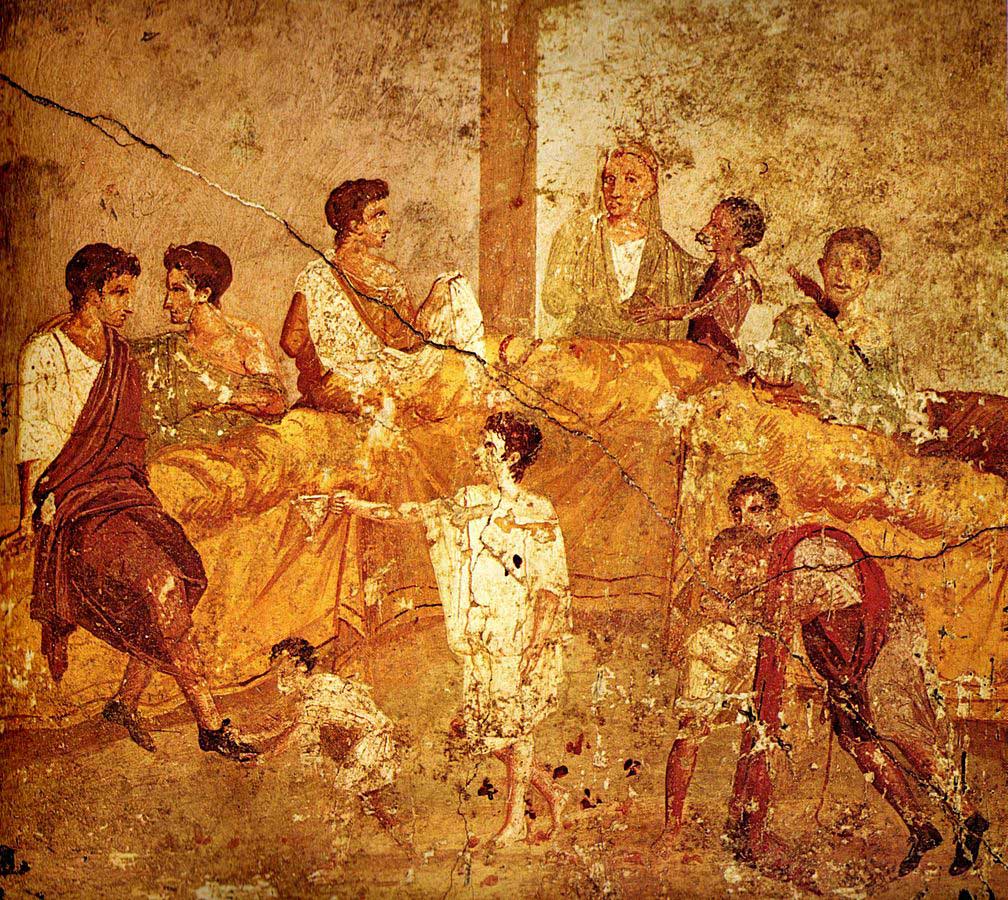
In the 50s the Italian cooking book Cucchiaio d'Argento (the silver spoon) dedicated an entire section to the Galateo della tavola, table etiquettes.
While some rules are outdated, and some have been updated to modern times, the foundations remain the same.
- pamper your guests with attention to detail
- show respect and appreciation to your host if you are the guest
There are some differences from Anglosaxon table etiquettes, but even if countries and cultures may have different dining rules, the principle and meaning are the same.
Rustic vs traditional Italian table setting
It doesn't matter if you are enjoying a relaxed dinner in a garden under the tree or a formal banquet with several courses in a sumptuous home, there are some table etiquette Italians will follow regardless.
For Italians, everyday lunch and dinners are always a family matter.
We all sit together and eat at the table.
So even as children, we were taught to eat properly and there was no exception.
My mother always said: "Proper table manners have to come naturally in your everyday eating."
She would propose to make us eat in front of a mirror and see if we enjoyed looking at ourselves eating.
LOL!
Still to this day, even if I eat by myself, I set the table and eat as I was taught, always imagining a mirror in front of me.
That is what I also tell my two sons.

The basic
Let's skip the obvious etiquette rules which are pretty standard worldwide, like don't speak with your mouth full, keep your mouth close, do not use toothpick...
However, there are some rules that may not apply everywhere but are very important in Italy:
- keep your elbows off the table
- keep your hands and wrists on the table at all times
- do not bring your phone to the table
- if using only a spoon or a fork they are held with the right hand
- when using both knife and fork, the knife is always held with the right hand and the fork on the left. Italians do not switch over the fork on the right at each bite.
- generally, we do not use the spoon to roll our spaghetti. Some people did a long time ago but not anymore.
- AND DEFINITELY, WE DO NOT CUT THE SPAGHETTI WITH THE KNIFE

Proper manners in Italy
Besides the basic rules above, here are some practical behavioral rules that are important for Italians, as well as other western cultures:
- Place your napkin on your lap
- Wait until everyone is served before starting to eat
- Serve yourself small portions, you can always go for seconds
- Break a small size of bread with your fingers, never bite
- Do not clean your plate with a piece of bread, in Italian called Scarpetta
- Never say "Buon appetito" before eating

Why you should not say "Buon appetito" in Italy
It may sound odd but to follow the Italian table etiquette you should never say "Buon appetito" before starting a meal.
There is an old justification for that.
Aristocratic dinner parties did not have the purpose of nourishing the guests.
They were organized for meeting up, conversations, and networking purposes
Eating had a secondary scope.
Wishing a "Buon appetito", enjoy your meal, would have meant that guests were there to feed their hunger, assuming they had no other feeding means.

How to set a table
Setting up an Italian table is very straightforward and mostly standard to other western cultures:
- Forks and spoons are always pointing upward and the blade of the knife is facing toward the plate.
- On the left side of the dish are the forks while the knife and the spoon are on the right.
- The order in which the type of forks and knives are placed depends on the order of the serving. The first course should use the external cutlery, moving to the next set with each course.
- On top of the plate are the cutleries for desserts, first is the small knife blade facing the plate and handle toward the right. The fork, handle toward the left, then the spoon with the handle toward the right. Handles are positions toward the hand that should use them.
- The napkins are placed on the plate
- On the left is a small plate for the bread

How to set the glasses
Normally there will be 3 to 4 glasses placed on the right top corner of the plate, one for the water, one for the white wine, one for the red wine, and one for the Spumante at the end.
- The larger glass is for water and it is usually closer to the plate
- The white wine is smaller and closer to the hand
- The red wine is larger and taller and on the left side of the glasses
- The Spumante glass is behind and it is usually taller and thin
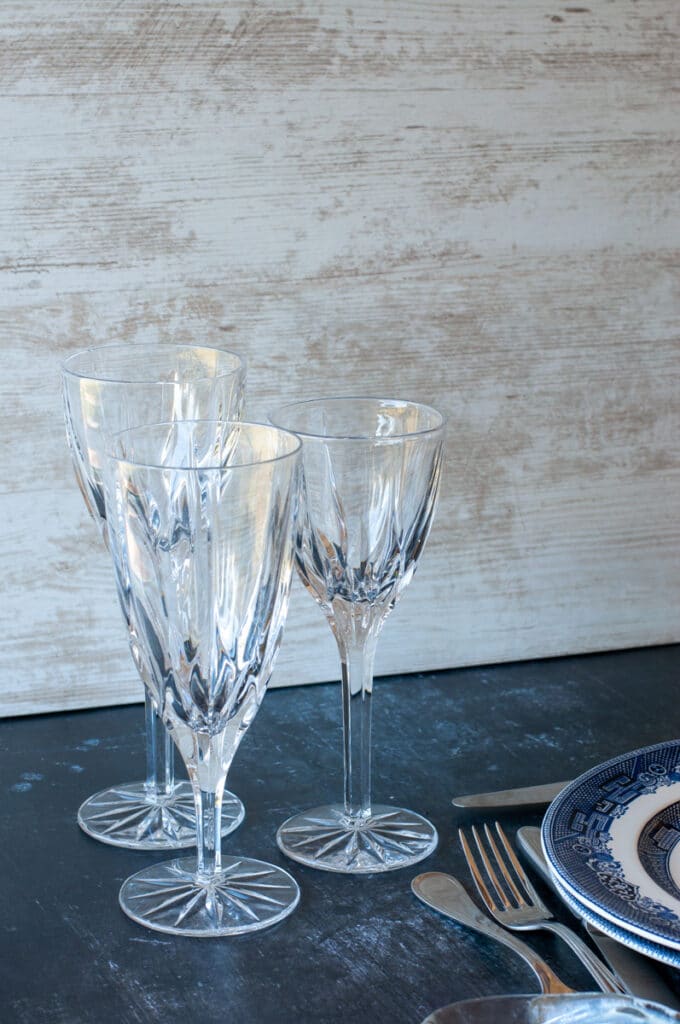
During the meal: host etiquettes
During the meal, you want to make sure the serving runs smoothly, so this is how to make sure it does:
- Once a course is finished the empty plate should be removed from the right
- The new clean plate should be served from the left
- Normally, men should fill the glasses of the fellow guests, however, they should never be filled up completely, only ⅓ full
- Plates should be removed only when everyone has finished
- There would be some occasion when guests would need to rinse their fingers, as for example when eating a seafood course with clams or mussels. Serve a small bowl of water with a slice of lemon. The guests should rinse only the tip of their fingers and dry them on the napkins.
- If you are serving 2 main courses, one with seafood and one with meat, between the two courses serve a lemon sorbet to rinse the palate
- Before serving desserts, all the items used during the main meal should be removed: salt, pepper, bread, oil, and vinegar.
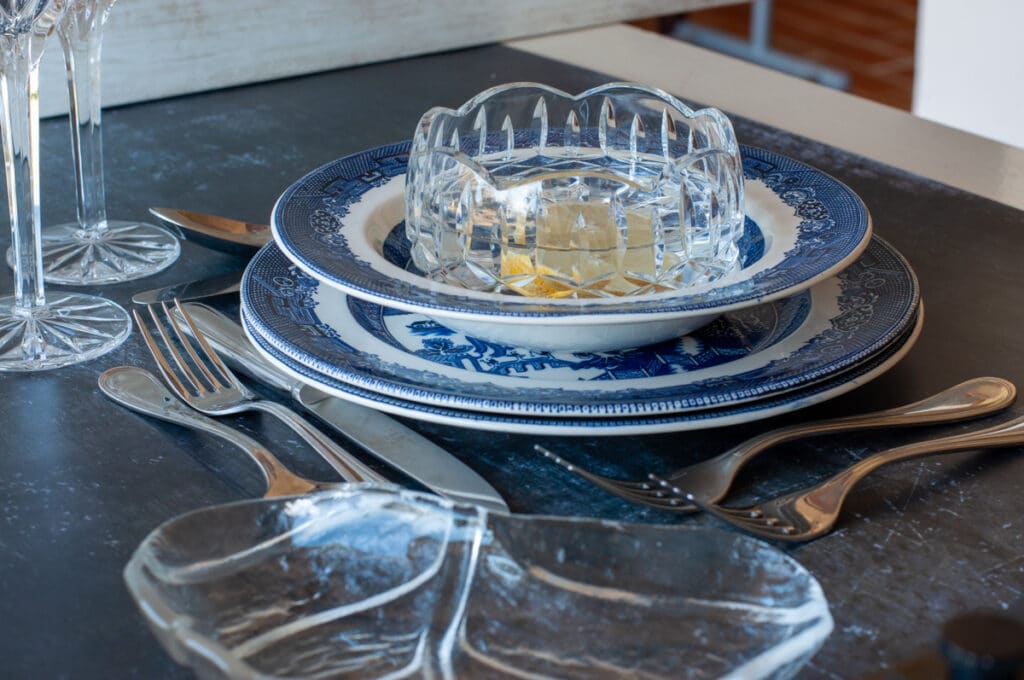
Other practical considerations:
- Even if I have a formal dinner with a hired waiter, I always prefer they bring the serving plate to the guests (always on the left side) so guests can help themselves. They can choose the amount of food they want to put on their plate, they can always go for seconds. This practice helps to reduce food waste.
- I don't like to leave food on my plate. As I don't have any food allergy, I like to taste and eat whatever my host is serving. I appreciate whatever was prepared with care and attention.
- Most of the time, if I have less than 12 guests, I do not have a waiter to serve and collect the dishes. We manage fine between my sons, me and some close friends that help. However, when it is time to collect the dirty dishes, it is not nice to pile them up on the dining table. Either we bring them back in the kitchen then pile them up, or I pile them on a side table or trolley.
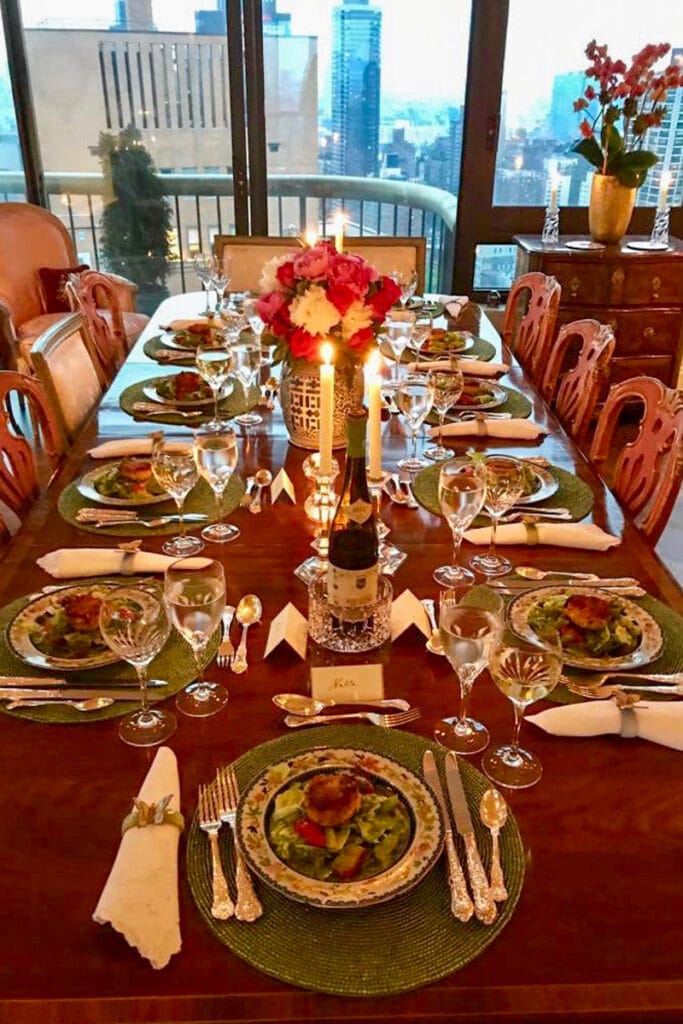
During the meal: guest etiquettes
There are some important rules for the guests to follow during the meal:
- If you are still eating and you need to leave the fork and knife on the plate for example to drink, you should leave them crossing on the plate to indicate that you are still eating.
- However, once you finish eating you aline the knife and fork parallel on the plate to indicate that you have finished.
- If you need to get up from the table or once you leave the table, place the napkin beside the dish, bent but not properly folded.

Moving to the living room
Usually, coffee is served in the living room, away from the dining table.
In Italy we use to say, "let's retire to the smoke room", then you know dinner is over and it is time to digest.

Exception to the rules
There are always exceptions to the rules, and these are what I consider acceptable allowances:
- Couples with young children left alone with a nanny should be allowed to have their phone with them at the table in case of an emergency
- If the dinner is informal among close friends and family, dipping the bread in the sauce "fare la scarpetta" is acceptable if done discretely. Cleaning a plate to the very last sign of sauce is not recommended.
- Acceptance of cultural differences: table etiquettes can differ from countries and cultures and we should all be more tolerant and considerate toward others.
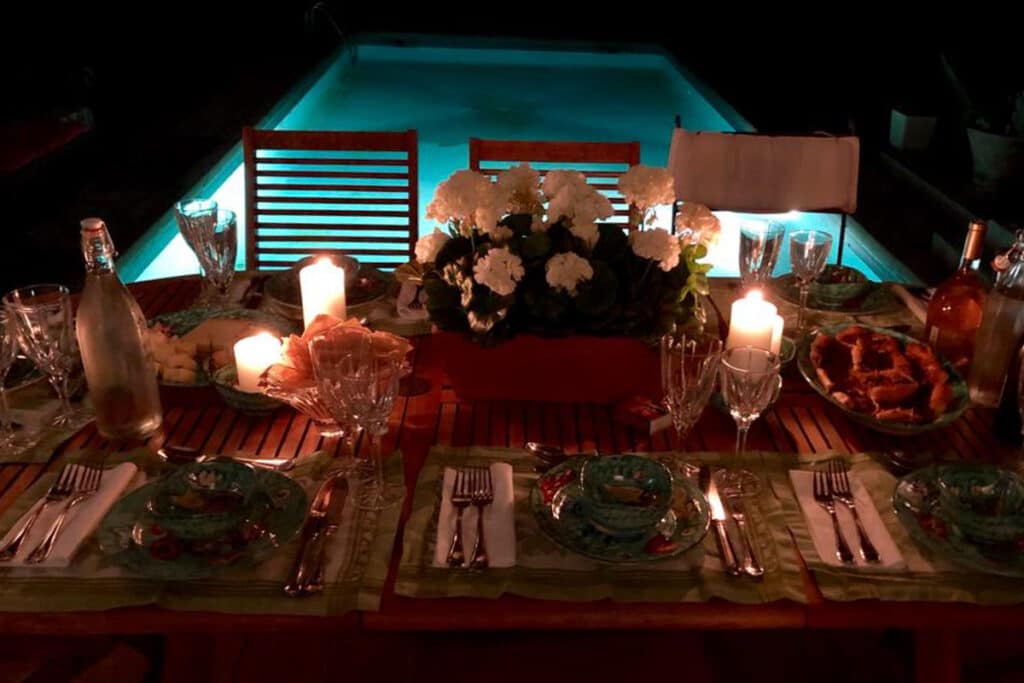
If you are traveling to another country, take a few minutes to find out what is considered totally unacceptable in that culture and try to respect at least some basic rules.
I learned so much from my international travel and have enriched my table arrangements and manners from it.
If you have guests from a different culture, be open-minded and accommodating, something very normal for you may be considered rude in their perspective, who knows!
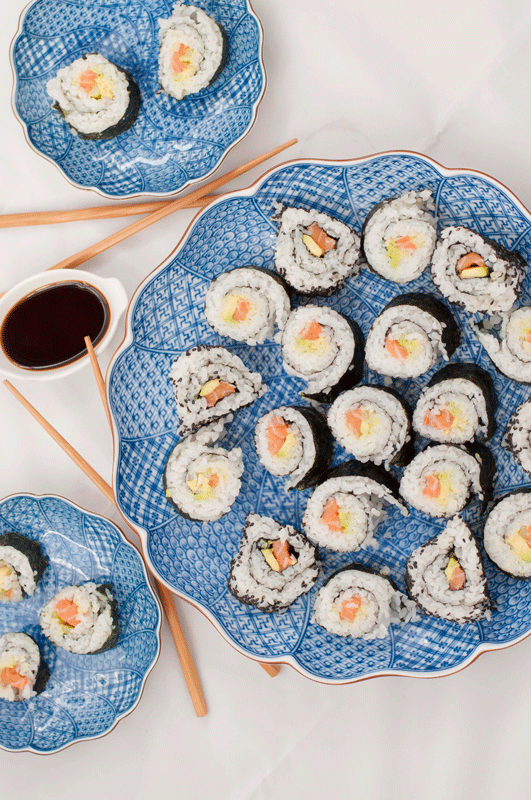
Fun fact
Some time ago, we took my mom to a Michelin star restaurant in France.
As we set at the table the waiter came, grabbed each of our napkins, and with a spectacular swing placed the napkins on our laps.
My mom looked at this show in terror and we had to work hard to convince her to stay as she refused to eat in such a rude place.

If you are making any of these Italian breakfasts, leave your comment below I would like to hear from you. You can find more delicious ideas if you FOLLOW ME on Facebook, YouTube, or sign up to my newsletter.

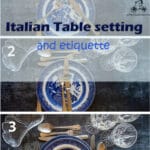
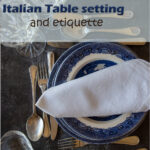




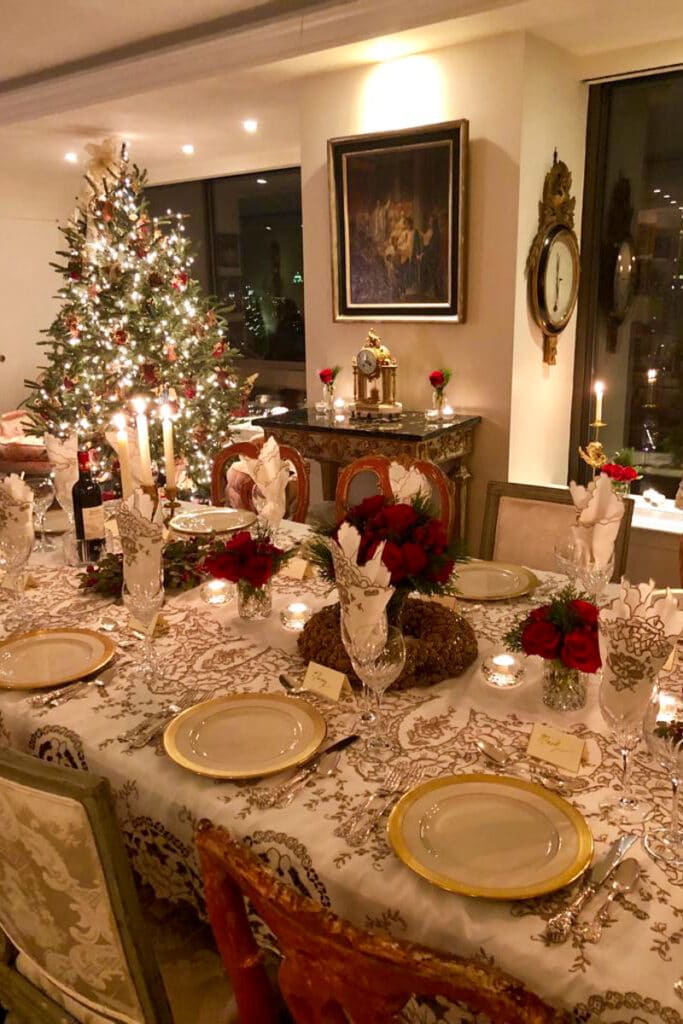
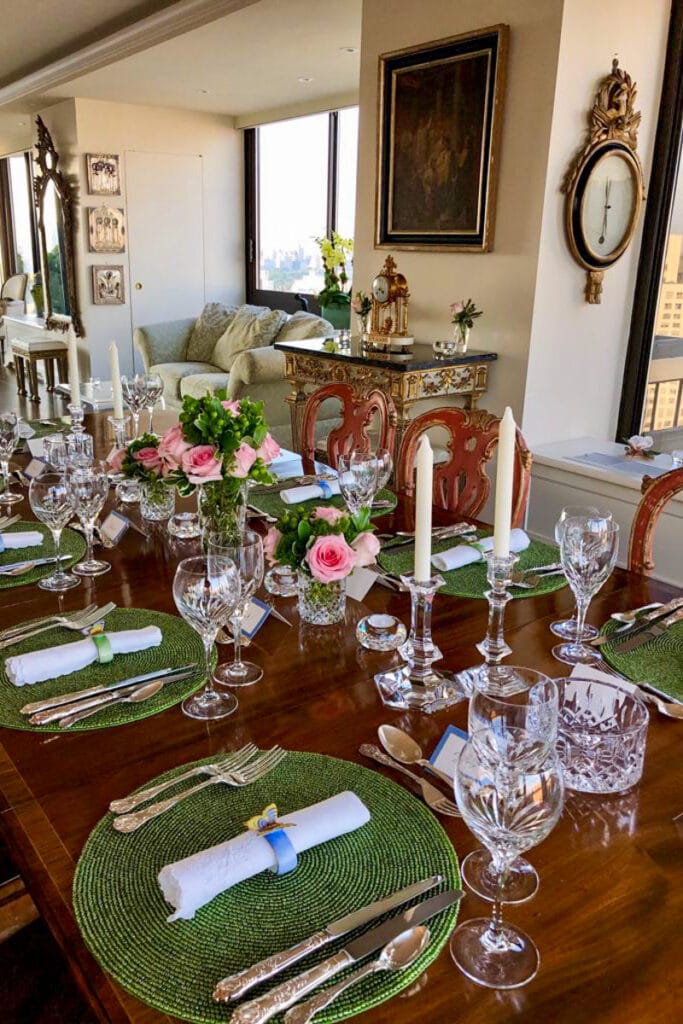


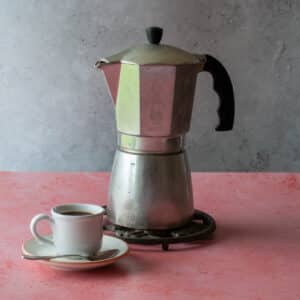
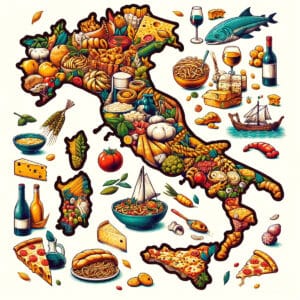
kais
Amazing work
Laura
Thank you